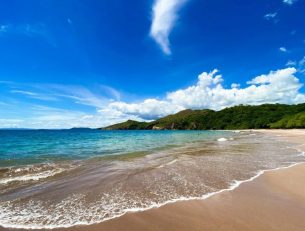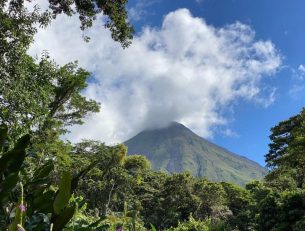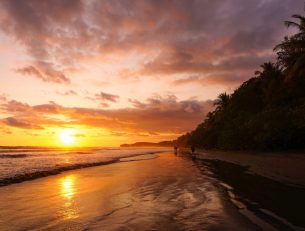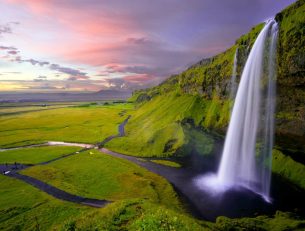Our ultimate guide to a holiday in Costa Rica aims to answer all the most commonly asked questions we get when travellers are considering taking the leap and heading out on their own adventure in this beautiful Central American country.
From the best time to go to the essentials like local currency or transportation links, this guide will hopefully help you feel truly prepared for your very own adventure holiday in Costa Rica, so that all you have to worry about is snorkelling with sea turtles, hiking up volcanoes and drinking in the endless canopy of the cloud forest.
What is the best time of year to visit Costa Rica?
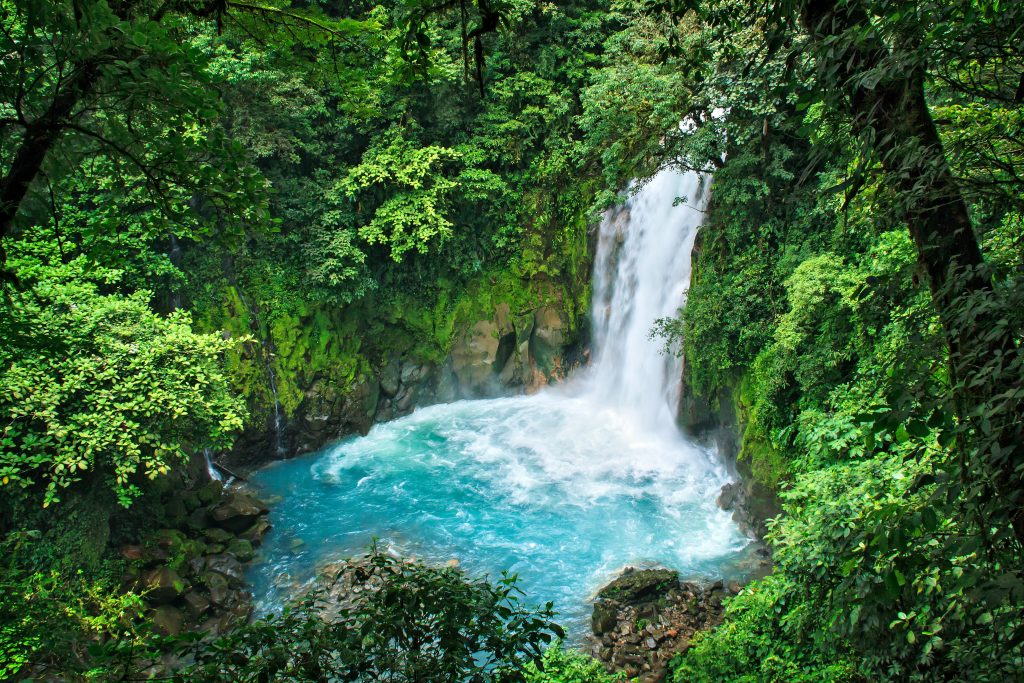
The best time to visit Costa Rica depends on your preferences and the specific activities you have in mind. Generally, Costa Rica has two distinct seasons: the dry season and the wet season.
The dry season runs from December to April and is considered the high season for tourism. This time of year is characterized by sunny days, lower humidity, and fewer rainstorms. The dry season is an excellent time to visit the beaches and explore Costa Rica’s many national parks.
The wet season, also known as the green season, runs from May to November. During this time, Costa Rica experiences more rain and higher humidity levels. However, the rain typically falls in the afternoon and evening, leaving the mornings relatively dry. The wet season is an excellent time to visit Costa Rica for wildlife viewing, as many animals are more active during this time, and the rainforest is lush and green.
Ultimately, the best time to visit Costa Rica depends on your interests and preferences. If you prefer sunny and dry weather, then the dry season is the best time to visit. However, if you want to experience Costa Rica’s lush rainforests and see more active wildlife, then the wet season might be a better fit.
What are the top things to see and do in Costa Rica?
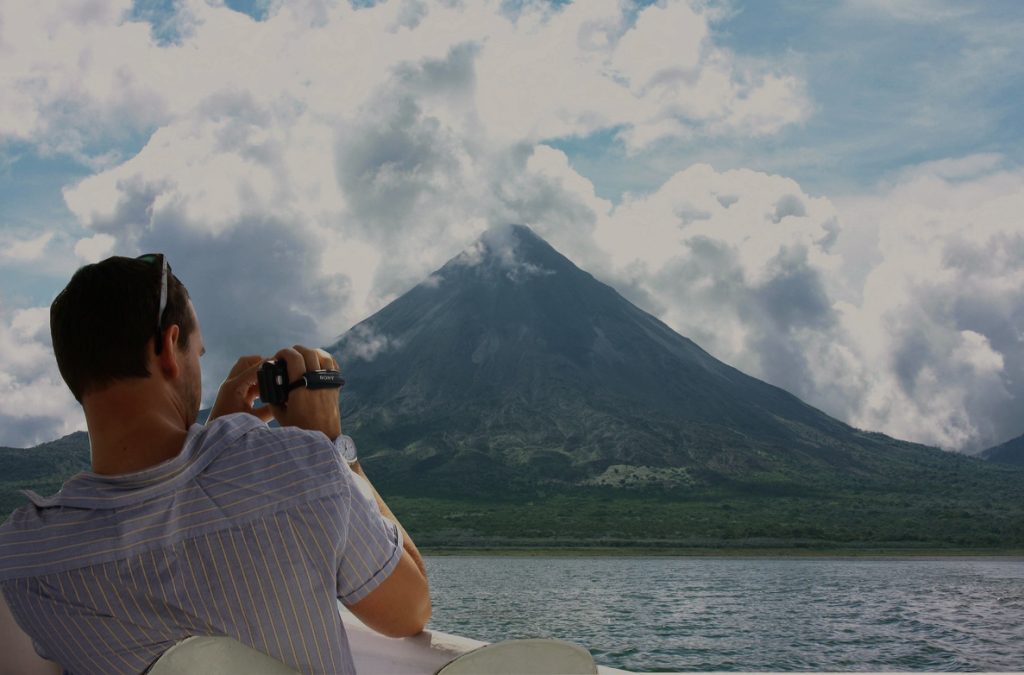
Costa Rica is a beautiful and diverse country with plenty of things to see and do. Here are some of the top attractions and activities:
Explore the rainforest: Costa Rica is known for its incredible rainforests, filled with exotic plants and animals. Visit the Monteverde Cloud Forest Reserve, Manuel Antonio National Park, or Tortuguero National Park for an unforgettable experience.
Relax on the beaches: Costa Rica has some of the most beautiful beaches in the world. Visit Playa Conchal, Jaco Beach, or Tamarindo Beach for sunbathing, swimming, and surfing.
Go on a wildlife safari: Costa Rica is home to some of the most diverse wildlife in the world. Take a guided tour to see sloths, monkeys, toucans, and other exotic animals in their natural habitats.
Zipline through the canopy: Costa Rica is the birthplace of the zipline, and there are plenty of places to experience this thrilling activity. Soar through the rainforest canopy on a zipline tour.
Visit Arenal Volcano: Arenal Volcano is one of the most active volcanoes in Costa Rica. Hike through the national park to see the volcano up close, and relax in the nearby hot springs.
Go on a coffee tour: Costa Rica is famous for its coffee, and there are many tours available to learn about the coffee-making process and sample the delicious brew.
Visit the capital city: San Jose is the capital city of Costa Rica, and it’s full of history and culture. Visit the National Museum, the Jade Museum, or the National Theatre to learn more about Costa Rica’s past and present.
These are just a few of the many things to see and do in Costa Rica. With its stunning natural beauty, rich culture, and endless activities, Costa Rica is a must-visit destination for travellers.
What are the best beaches in Costa Rica?
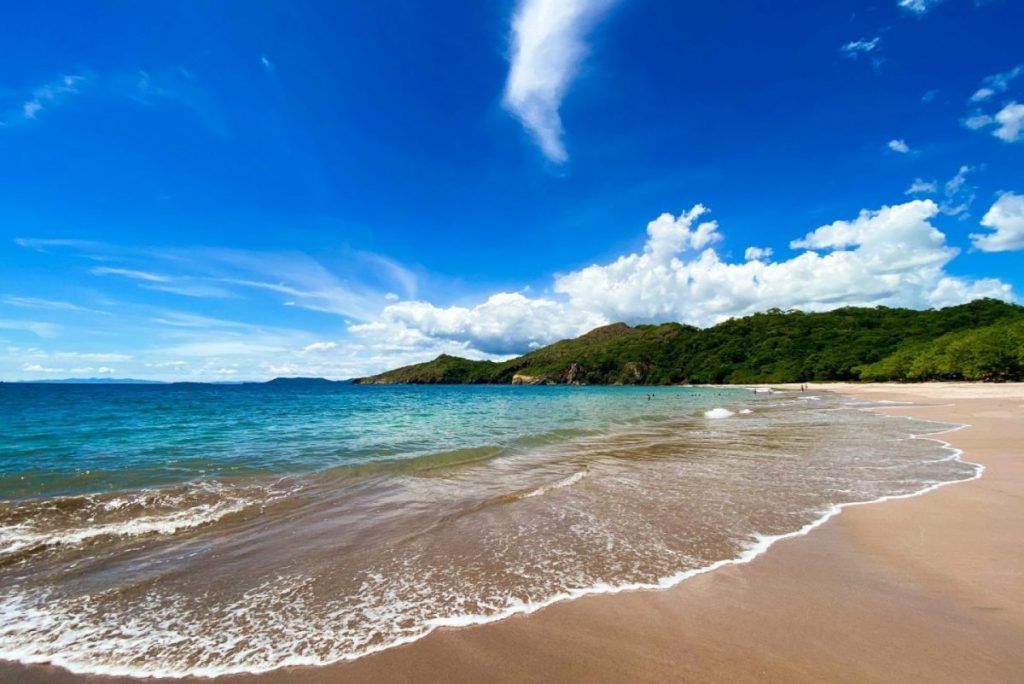
Costa Rica is known for its beautiful beaches, and there are many to choose from. Here are some of the best beaches in Costa Rica:
Manuel Antonio: Manuel Antonio is one of the most popular beaches in Costa Rica, with crystal-clear waters and pristine white sand. The beach is located in Manuel Antonio National Park, and there are plenty of activities available, such as snorkelling and kayaking.
Tamarindo: Tamarindo is a long, wide beach with excellent surf conditions. The beach is perfect for swimming, sunbathing, and surfing, and there are many restaurants and shops nearby.
Playa Conchal: Playa Conchal is a stunning beach with crystal-clear waters and soft, white sand made up of tiny seashells. The beach is perfect for swimming, snorkelling, and sunbathing, and there are many activities available, such as jet skiing and banana boating.
Jaco: Jaco is a lively beach town with a long, sandy beach and excellent surf conditions. The town is known for its nightlife, restaurants, and shops, and there are many activities available, such as zip lining and ATV tours.
Santa Teresa: Santa Teresa is a remote beach on the Nicoya Peninsula, known for its excellent surfing conditions and laid-back vibe. The beach is perfect for swimming, sunbathing, and surfing, and there are many restaurants and shops nearby.
These are just a few of the many beautiful beaches in Costa Rica. Whether you’re looking for a peaceful retreat or an action-packed adventure, there’s a beach in Costa Rica that’s perfect for you.
Is it safe to travel to Costa Rica?

Costa Rica is generally a safe country for travellers, with a relatively low crime rate compared to other countries in the region. However, like any destination, it’s important to take certain precautions to ensure your safety while traveling in Costa Rica. Here are some tips:
Use common sense: As with any destination, use common sense and take precautions to ensure your safety. Don’t walk alone at night in unfamiliar areas, and be aware of your surroundings at all times.
Be cautious with valuables: Don’t carry large sums of cash or expensive jewellery. Keep your passport, money, and other valuables in a secure place, such as a hotel safe.
Take official taxis: When taking a taxi, make sure it’s an official taxi with a meter and red license plates. Unofficial taxis, known as “piratas,” are not regulated and may be unsafe.
Avoid isolated areas: Don’t go to isolated areas alone or at night. Stick to well-travelled, tourist areas.
Follow local laws and customs: Respect local laws and customs, and be aware of any restrictions or rules. For example, in some areas, it’s illegal to swim alone in the ocean.
Overall, Costa Rica is a safe destination for travellers, but it’s important to take precautions to ensure your safety. By using common sense and being aware of your surroundings, you can have a safe and enjoyable trip to Costa Rica.
Popular Adventure Holidays in Costa Rica
What is the local currency and how can I exchange money?
The local currency in Costa Rica is the Costa Rican Colón (CRC). While US dollars are widely accepted in Costa Rica, it’s a good idea to have some local currency on hand for smaller purchases and to pay for activities or accommodations that only accept colones.
You can exchange money at banks and currency exchange offices, which are found in major tourist areas. It’s important to note that the exchange rate at the airport and in tourist areas may not be as favourable as at banks or exchange offices.
ATMs are widely available throughout Costa Rica and are a convenient way to withdraw cash in local currency. However, it’s a good idea to check with your bank to make sure your ATM card will work in Costa Rica and to be aware of any fees that may apply for international withdrawals.
Credit cards are accepted at many businesses in Costa Rica, but it’s always a good idea to have cash on hand in case a business doesn’t accept credit cards or there are issues with the card machine. Some businesses may also charge an additional fee for credit card transactions.
Overall, it’s a good idea to have a mix of local currency and US dollars when traveling in Costa Rica, as well as a credit card and ATM card for backup.
Do I need a visa to enter Costa Rica?
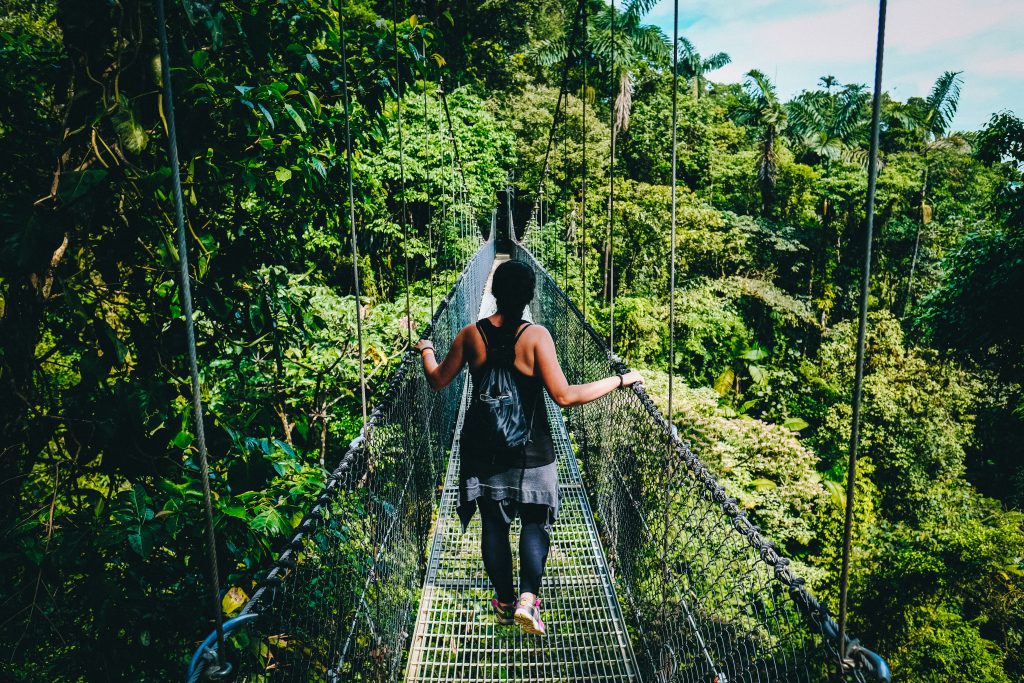
Whether or not you need a visa to enter Costa Rica depends on your nationality and the length of your stay. Here are some guidelines:
Visa-exempt countries: Citizens of many countries, including the United States, Canada, the United Kingdom, and many countries in Europe and South America, do not need a visa to enter Costa Rica for tourism purposes. However, they will need to have a valid passport and a return ticket.
Visa-required countries: Citizens of some countries, including China, India, and Russia, require a visa to enter Costa Rica for any purpose. You should check with the Costa Rican embassy or consulate in your country to determine whether you need a visa.
Length of stay: Visitors from visa-exempt countries are typically allowed to stay in Costa Rica for up to 90 days. However, this can vary depending on your nationality and the purpose of your visit. If you plan to stay in Costa Rica for longer than 90 days, you may need to apply for an extension.
It’s important to note that entry requirements can change, so it’s always a good idea to check with the Costa Rican embassy or consulate in your country before traveling to Costa Rica.
What is the transportation system like in Costa Rica?
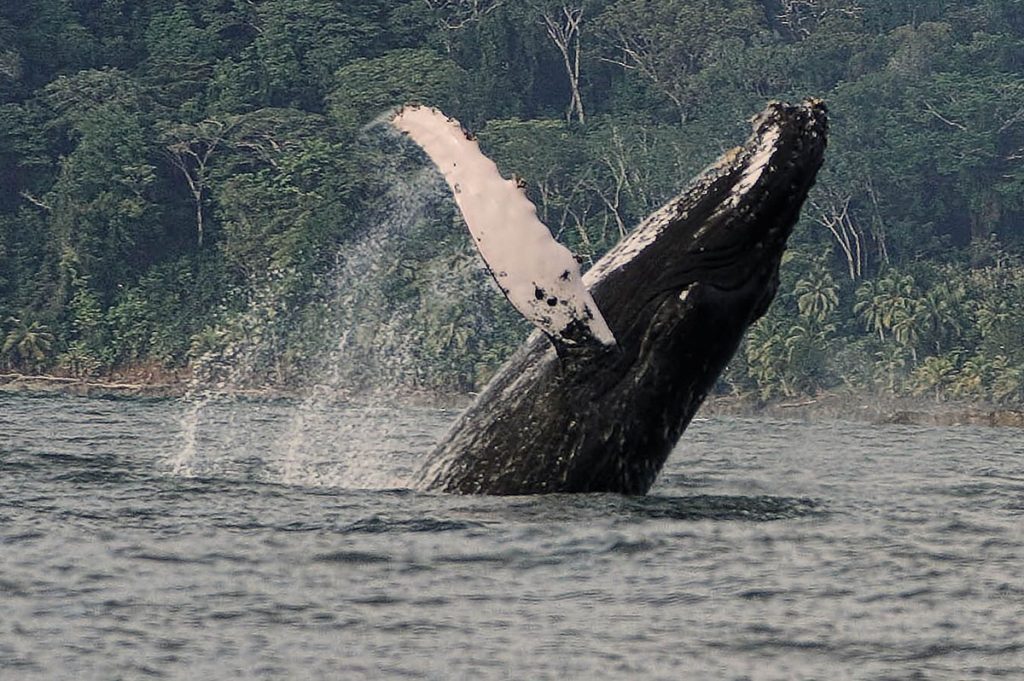
The transportation system in Costa Rica is generally reliable and safe, but it can be slow and inefficient in some areas. Here are some common modes of transportation in Costa Rica:
Buses: Buses are the most common form of public transportation in Costa Rica. There are many bus companies that operate throughout the country, and bus routes connect most major cities and towns. However, buses can be crowded and uncomfortable, and schedules can be unpredictable.
Taxis: Taxis are widely available in Costa Rica and are a convenient way to get around in urban areas. As we mentioned earlier, it’s important to take official taxis with red license plates and meters, as unofficial taxis, known as “piratas,” are not regulated and may be unsafe.
Rental cars: Renting a car is a popular way to explore Costa Rica, as it allows you to travel at your own pace and explore remote areas. However, driving in Costa Rica can be challenging, as roads can be narrow and winding, and traffic can be congested in urban areas.
Domestic flights: Domestic flights are available between major cities in Costa Rica, and they can be a convenient way to save time if you’re traveling long distances. However, flights can be expensive, and airports may be located far from city centers.
Shuttle services: Shuttle services are available in many tourist areas and can be a convenient way to get around. They often provide door-to-door service and can be more comfortable than buses.
Overall, the transportation system in Costa Rica is generally reliable, but it’s important to plan ahead and be prepared for delays and unexpected changes. It’s also a good idea to check with your hotel or tour operator for recommendations on the best transportation options for your needs.
On a Costa Rican adventure holiday with Not In The Guidebooks, we will organise all your transfers for you, so that you have a safe, comfortable, private and convenient way to travel from destination to destination.
At Not In The Guidebooks, we are always working to get our travellers off the beaten track and to the beating heart of the destination they are visiting. Whether that’s a wildlife holiday in Costa Rica, a cooking holiday in Italy, or a Christmas holiday in Lapland, our local hosts will help you discover the authentic, local side to a destination you would never discover yourself, helping you not just see the place you visit, but experience it.






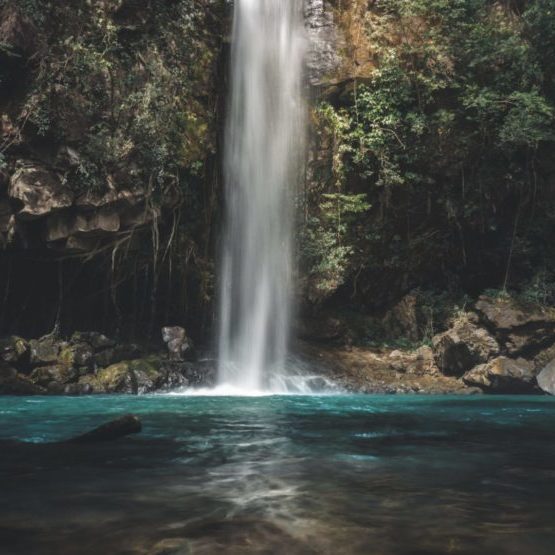
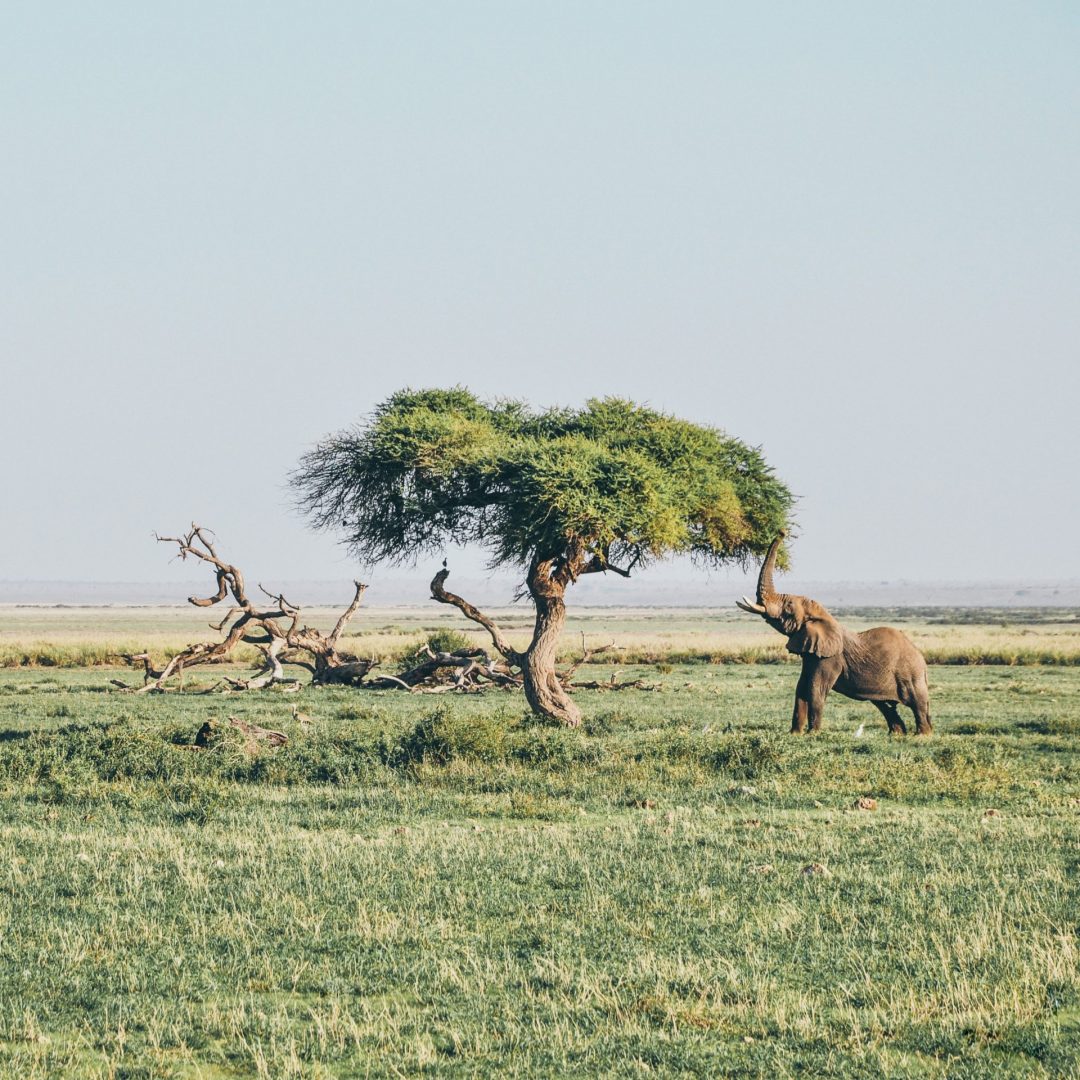

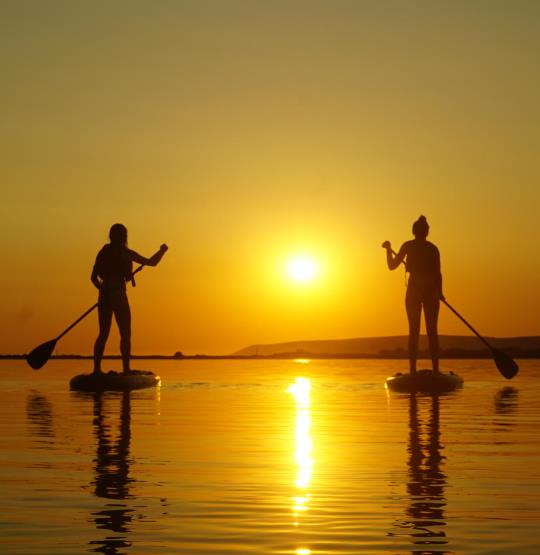

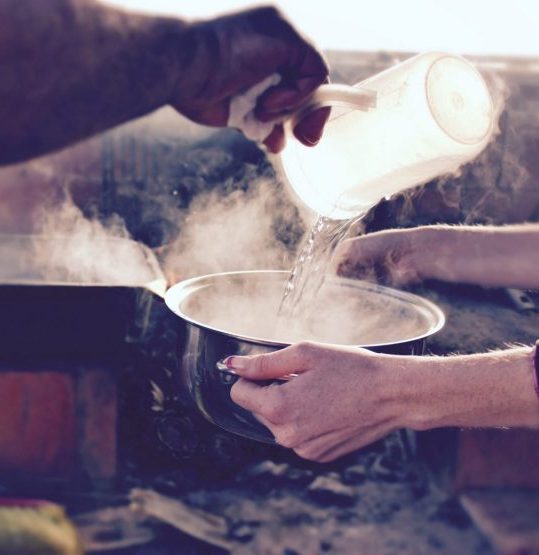

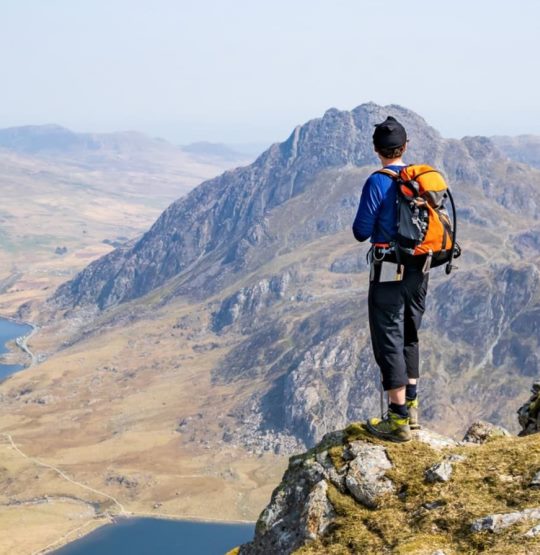
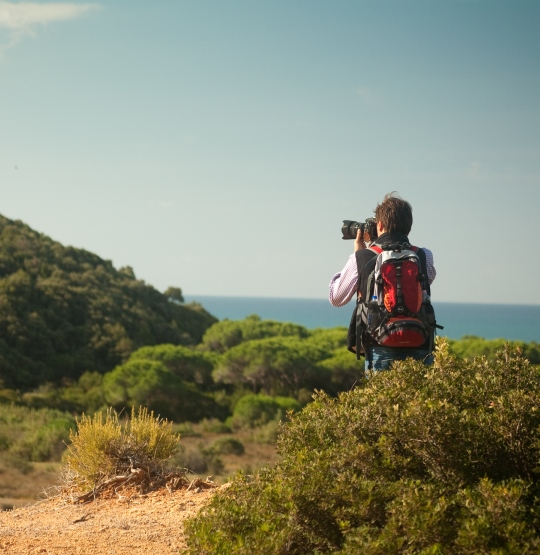


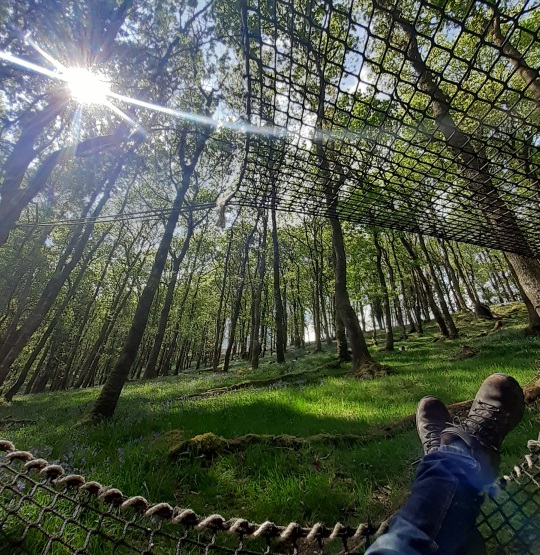

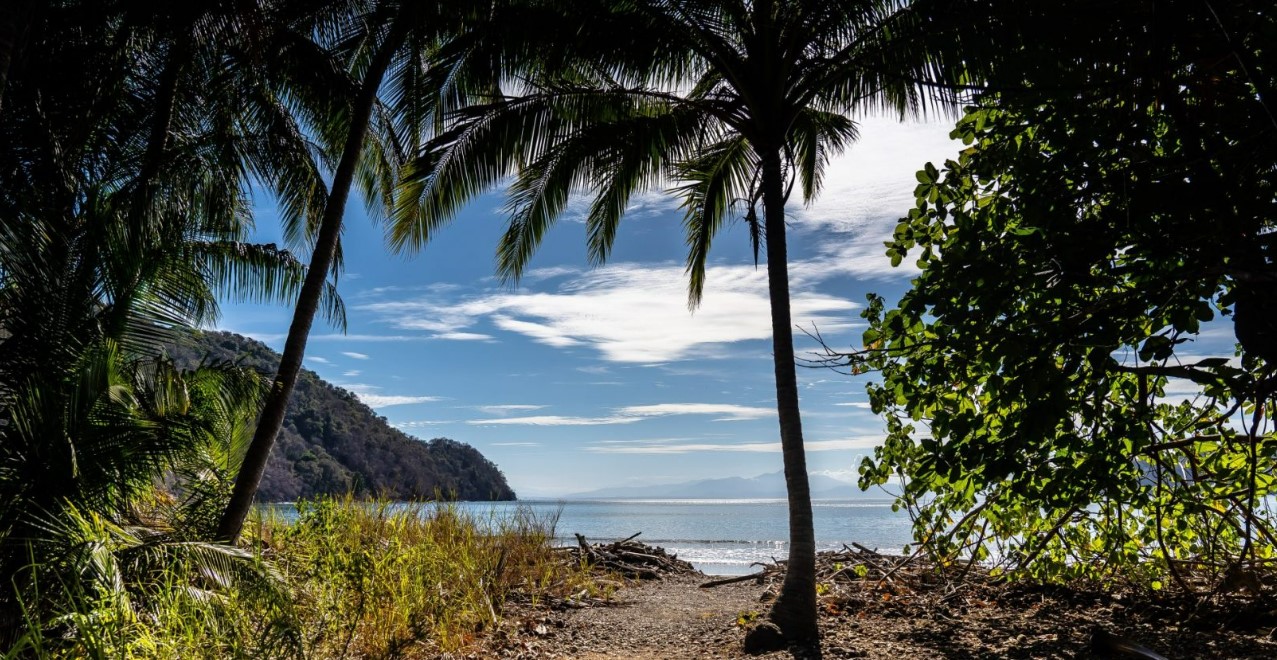


 Costa Rica
Costa Rica 